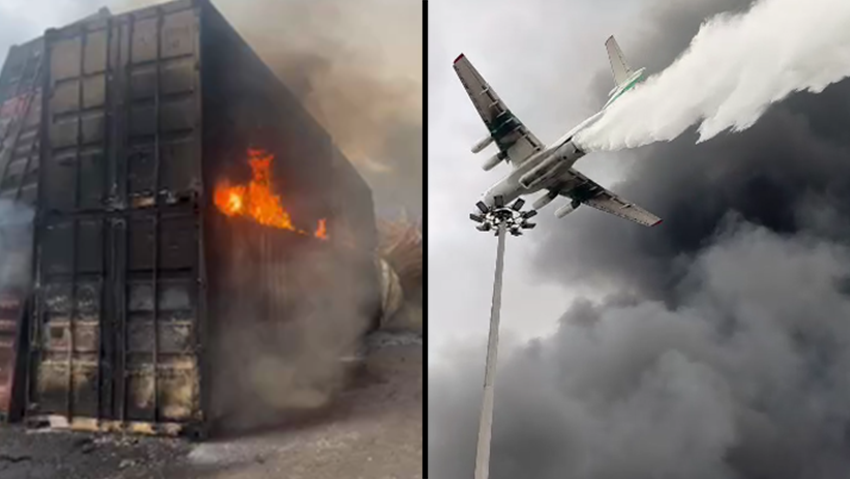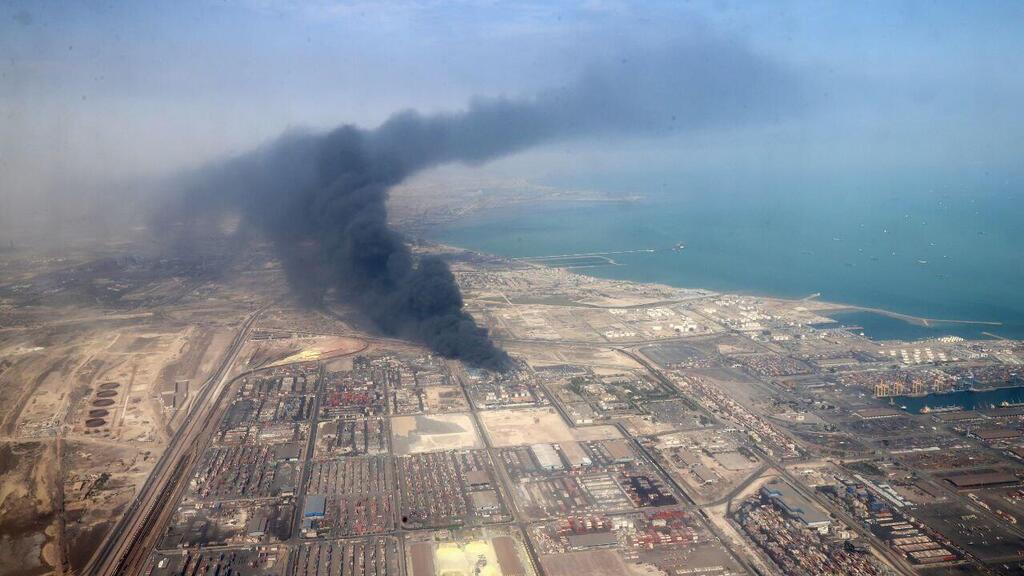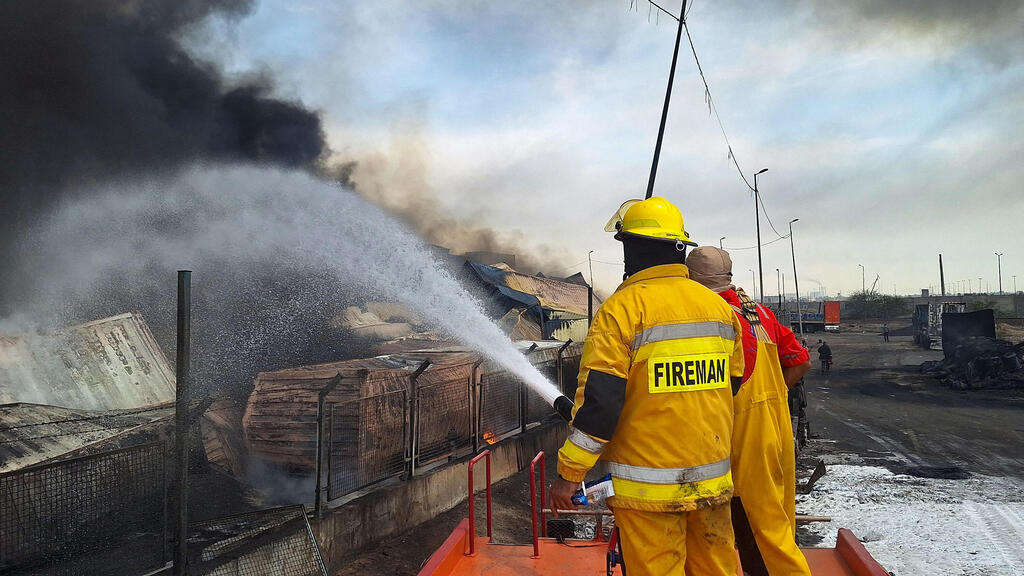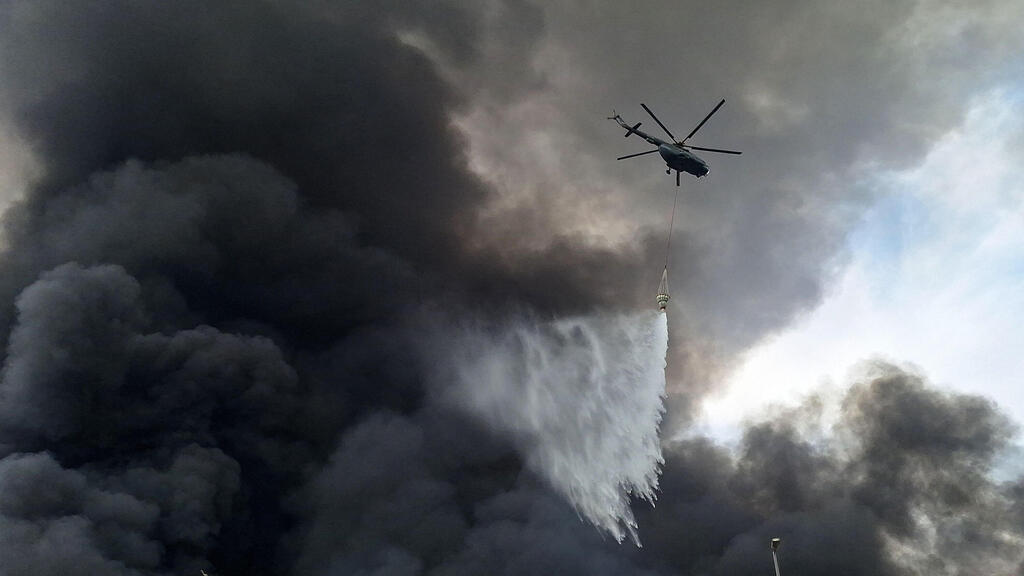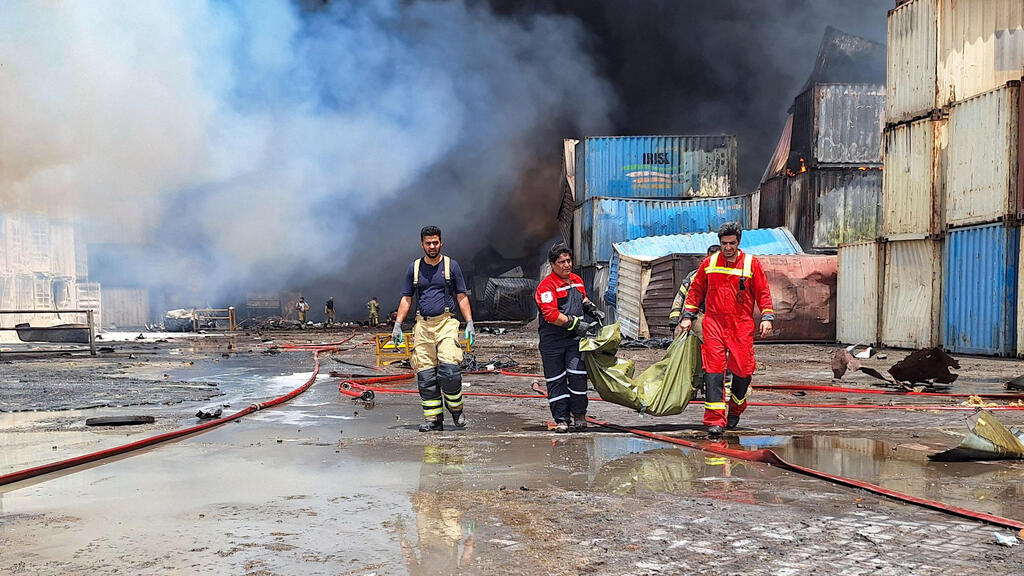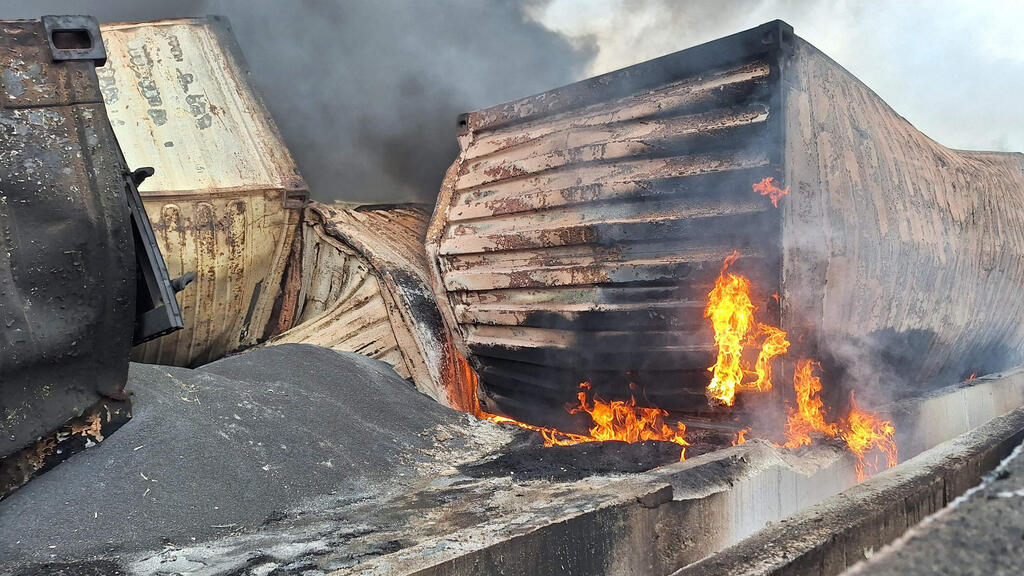Getting your Trinity Audio player ready...
Firefighting efforts continued Sunday at Iran's Shahid Rajaee Port in the southern city of Bandar Abbas, following a massive explosion that took place there on Saturday. Fire crews were seen deploying planes and helicopters to drop water from above.
Iranian Interior Minister Eskandar Momeni said 80% of the fire had been contained but estimated it would take several more hours to fully extinguish. However, new container explosions around midday caused the flames to intensify again.
Footage of the fires in Iran
Shockwaves hitting following the explosion
Authorities raised the death toll to 36 and said 800 people had been injured, with 190 still hospitalized. Meanwhile, state media reported that operations had partially resumed at undamaged areas of the port. Iranian television aired footage showing containers being unloaded from a docked ship.
For the first time, Iran publicly accused Israel of involvement. "Israel was involved in the Rajaee Port explosion. This was not an accident,” Iranian parliament member Mohammed Seraj alleged.
“Explosives were planted in containers, either at the country of origin or along the shipping route. We do not rule out internal elements helping plant the explosives." He claimed that: "Clear evidence points to Israeli involvement. The explosion occurred at four different locations."
The blast occurred around 12:00 p.m. local time Saturday. Early footage showed orange smoke rising into the sky before a massive mushroom cloud formed. The explosion caused widespread damage to Shahid Rajaee Port, Iran's largest commercial port, with shockwaves reportedly felt across several kilometers.
New footage released Sunday showed the blast's impact inside an office 5 kilometers (3.1 miles) from the site, where a woman was seen standing up from her desk, approaching a window and then being hurled backward by the shockwave.
Additional images from the scene showed a structure completely destroyed, believed to be the same hangar filmed during the initial explosion.
Russian President Vladimir Putin, whose country has strengthened ties with Iran amid the Ukraine war — heavily relying on Iranian-made drones — sent condolences, expressing "sympathy and support for the victims’ families and wishes for the woundeds' recovery." Later, Russia announced it would send aircraft to assist with firefighting efforts.
On Saturday night, officials said high winds had made it difficult to control the blaze. Emergency services announced that schools, offices and universities in Bandar Abbas would remain closed Sunday. Iran’s Health Ministry advised residents of Hormozgan province to stay indoors due to the release of toxic gases.
The cause of the explosion remains under investigation. Early reports suggest it occurred in containers holding chemicals. Hossein Zafari, spokesman for Iran’s emergency management agency, blamed "improper storage."
Shahid Rajaee Port is believed to have recently received shipments of sodium perchlorate from China — a key ingredient for manufacturing solid rocket fuel used in Iran’s ballistic missiles. Overnight, a source described as linked to the Iranian Revolutionary Guard Corps (IRGC) confirmed to The New York Times that sodium perchlorate was the material involved.
Iran’s Defense Ministry, however, denied any military materials were stored at the port, dismissing foreign media reports as "part of an enemy psychological operation."
So far, there is no conclusive evidence the blast was caused by a deliberate attack and Iran’s leadership has not officially suggested sabotage. Iran is currently engaged in negotiations with the United States — the explosion coincided with a third round of talks Saturday in Oman — making a deliberate act of sabotage unlikely, as it could jeopardize the talks.
Still, negligence or a technical failure remains a strong possibility. Iran has suffered several such incidents in the past, due to aging infrastructure, U.S. sanctions severely hampering maintenance and widespread mismanagement and corruption.
Shahid Rajaee Port is part of the vital infrastructure of Bandar Abbas, located on the northern shore of the Strait of Hormuz at the entrance to the Persian Gulf — a strategic waterway that handles 20% of global oil shipments. The port is crucial to Iran’s economy, processing 70% of its commercial goods — about 80 million tons annually. It also houses oil and petrochemical facilities.
In 2020, the port was reportedly targeted by a cyberattack that disrupted operations. At the time, The Washington Post reported that Israel was behind the attack.
Get the Ynetnews app on your smartphone: Google Play: https://bit.ly/4eJ37pE | Apple App Store: https://bit.ly/3ZL7iNv





